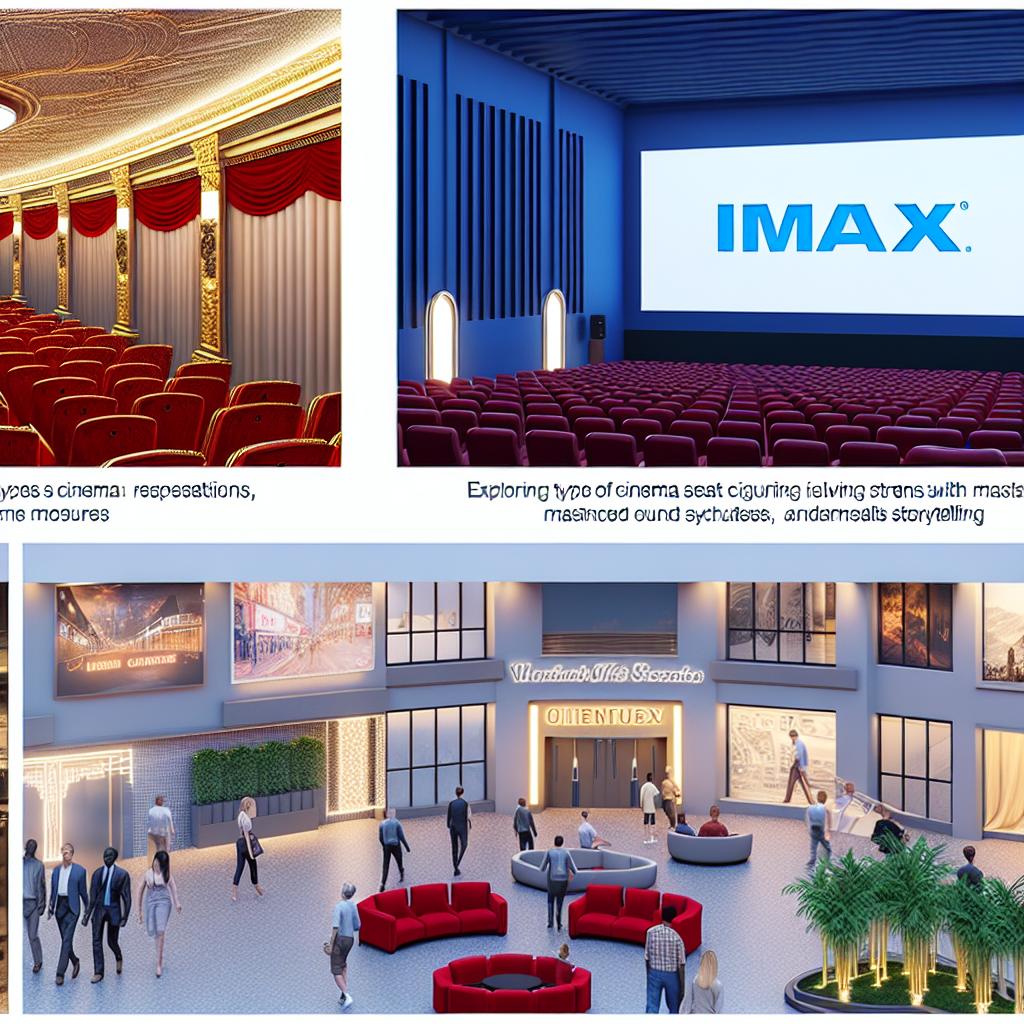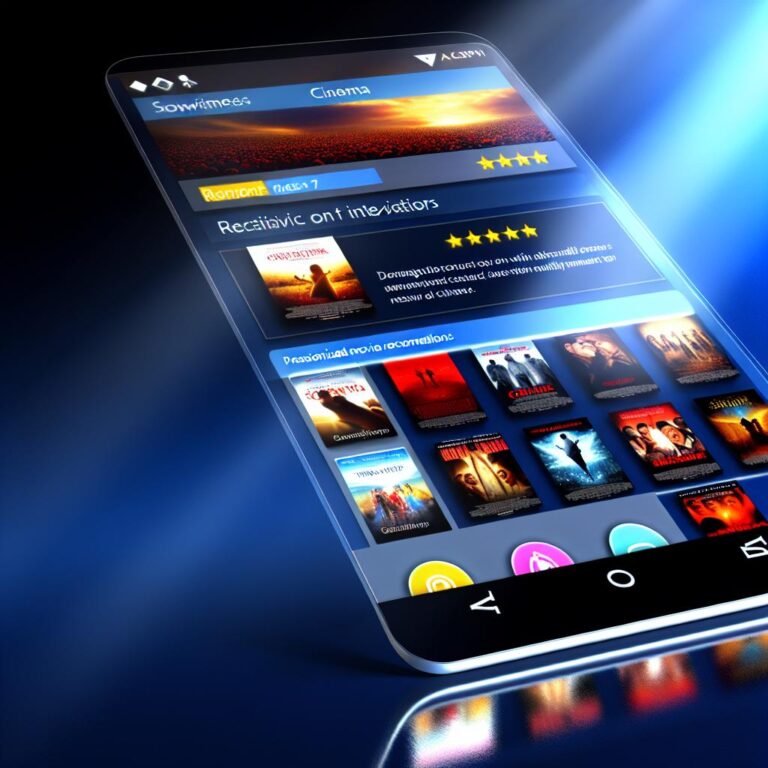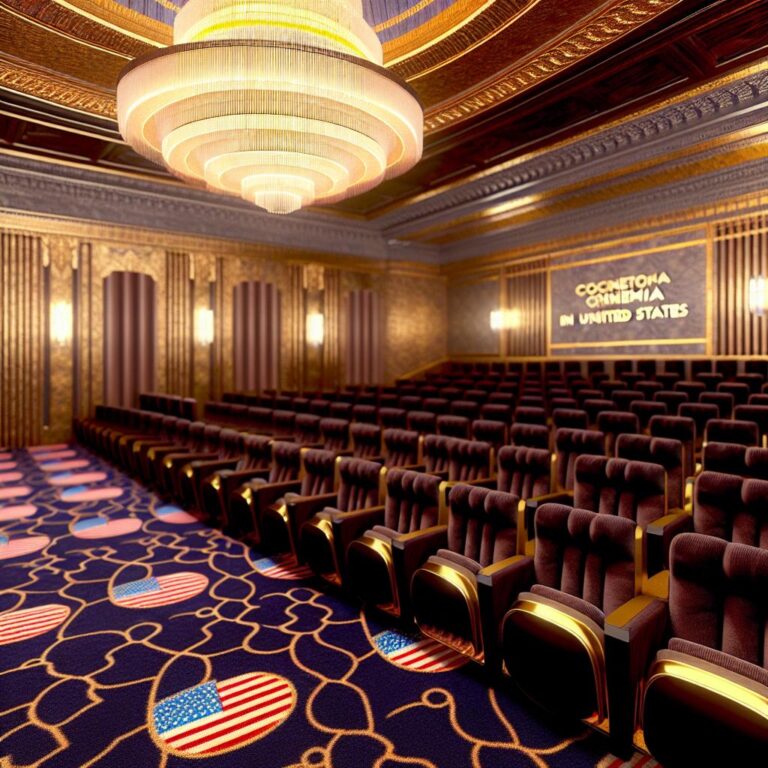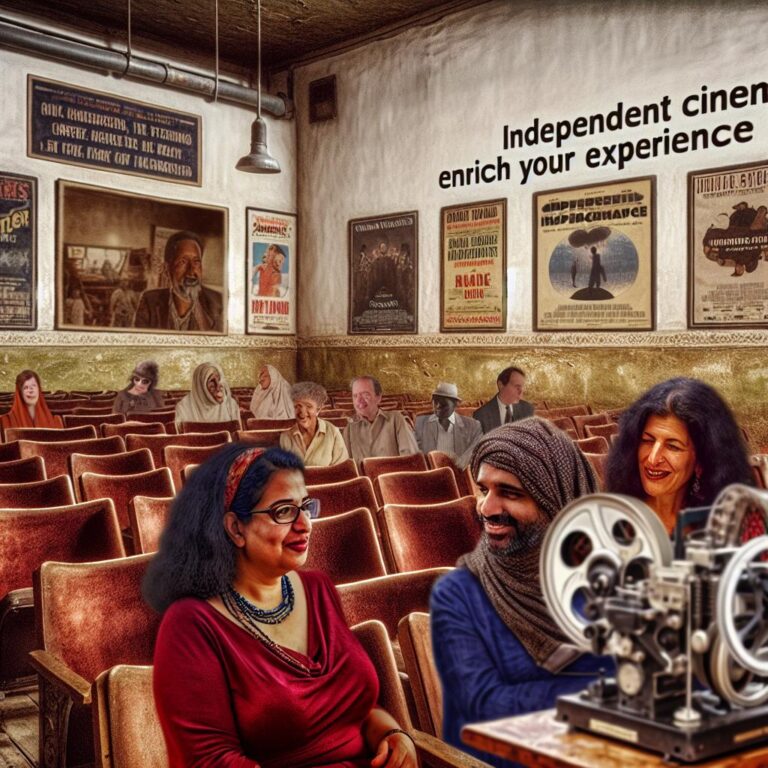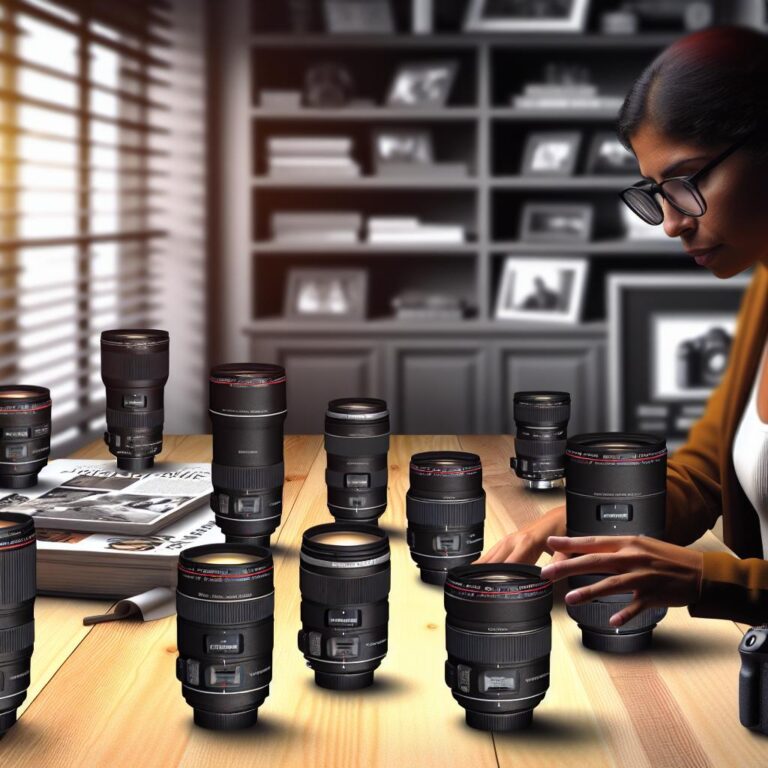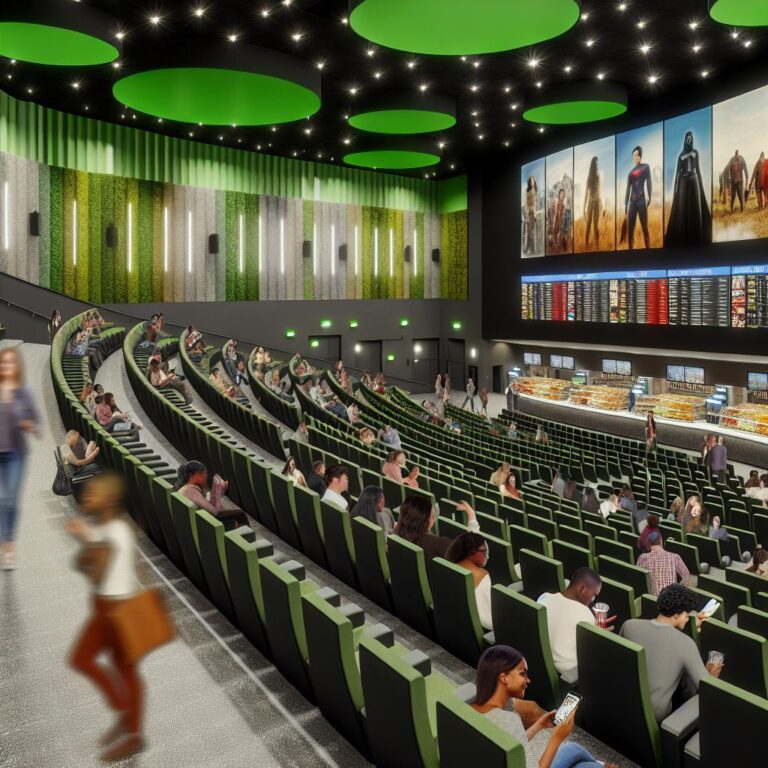Types of Cinemas: What Are Their Unique Features?
** Cinema Formats and Experiences**
- IMAX: Features large screens, surround sound, and high-detail images, enhancing movies' intensity and realism.
- 4D Cinema: Offers immersive experiences with moving seats, sensory effects, and more; found mainly in large cities or theme parks.
- Formats and Differences:
- Standard: Basic comfort and sound.
- RPX: Larger screens, enhanced sound, and leather seats.
- Dolby Cinema: Offers dynamic sound and clear images with luxury seating.
- Drive-in Theaters: Retro experience with outdoor screenings from cars, often featuring double features and themed nights.
- Outdoor Screenings: Community events in open spaces with classic or popular films, often with food trucks.
- Luxury & Boutique Cinemas: Offer reclining seats, gourmet dining, and indie or classic film screenings, enhancing personalization.
- Historical & Art House Cinemas: Feature unique architecture and promote indie films through diverse programming.
- Accessibility & Technology: Inclusive features like hearing loops and closed captioning; technological advances include 4K and laser projections.
- Community & Industry Trends: Offer special screenings and community events; adjust to streaming impacts with exclusive releases; employ creative marketing strategies including social media and loyalty programs.
Are you ready to explore the fascinating world of cinema formats? Let's dive into the unique features that make each cinema experience stand out. Whether you're intrigued by IMAX's jaw-dropping technology or curious about the sensory rush of 4D movie sessions, there's something for every film fanatic. We'll also discuss drive-ins and luxury theaters. Discover how different cinemas transform ordinary movie nights into memorable adventures. Stay with me, and pick your favorite cinema experience!
What are the Different Cinema Formats Available?
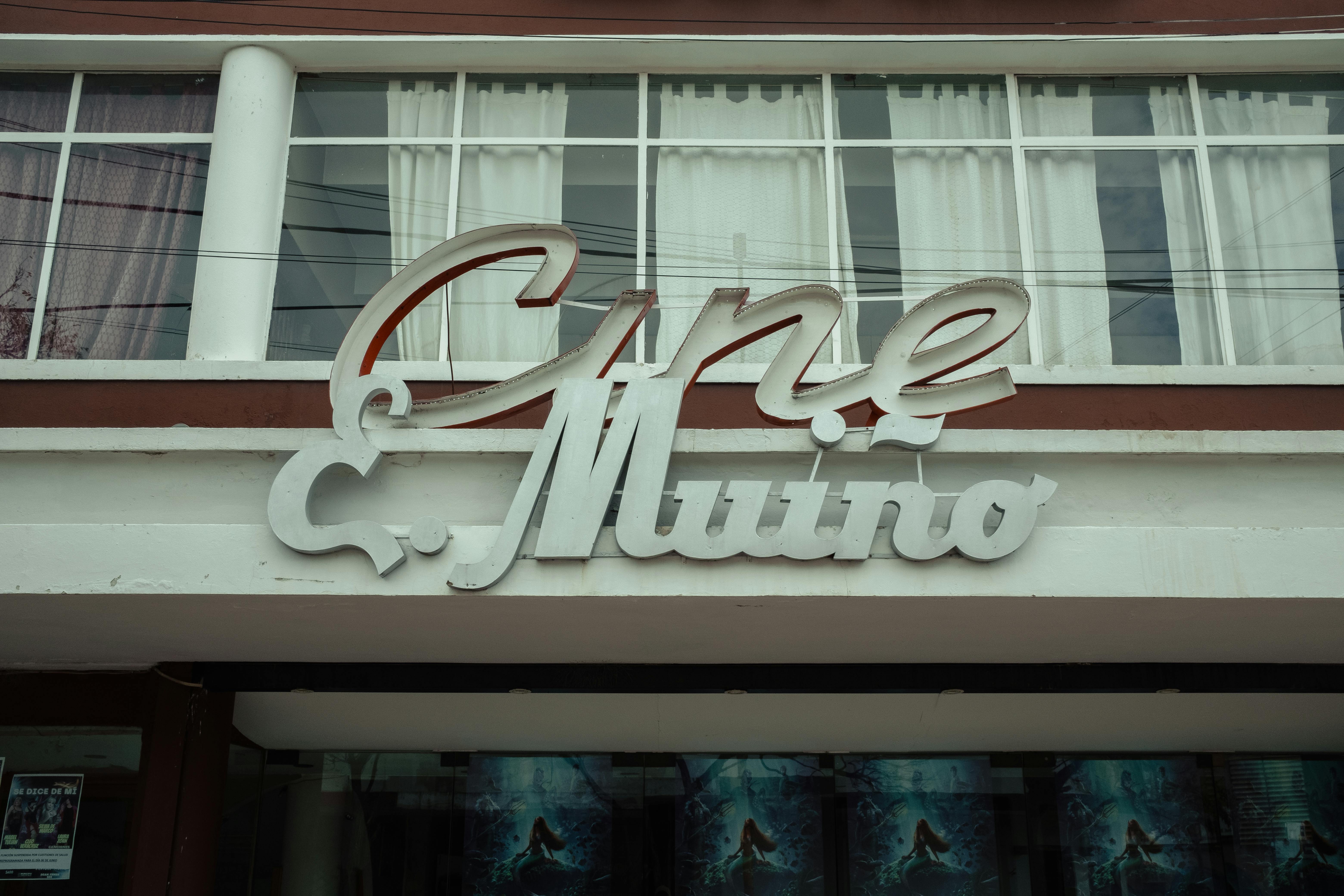
How does IMAX Theater Technology Enhance the Viewing Experience?
IMAX theaters use big screens, powerful sound, and clear images. This makes you feel like you are part of the movie. The screen is tall and wide, covering your whole view, which adds intensity. Plus, the theater design keeps each seat perfect for a great view. IMAX uses special cameras and film to shoot in high detail so images look better than anywhere else. The speakers surround the room, delivering sound from all around. This IMAX experience immerses you from the first roar or explosion, making it thrilling. When watching documentaries, the details are stunning. For blockbuster movies, the action feels so vivid and real with IMAX.
What is the 4D Movie Experience and Where Can You Find It?
In a 4D movie, you don’t just watch—you feel and move! This type of cinema adds special effects to the usual sights and sounds. Have you ever wondered how it feels to be in a storm or a car chase? In 4D, your seat might shake, tilt, or vibrate, matching the on-screen action. Water sprays, scents, and wind bursts might surprise you too. You can find 4D cinemas in bigger cities or as part of a theme park visit. These special effects bring movies to life, and you feel like you are right there in the scene. While fun, it might not suit everyone. Children often get giggly, and some adults find it thrilling. It's perfect for an extra dose of adventure during family outings!
How Do Standard, RPX, and Dolby Cinema Formats Differ?
Many movie theaters come with their own format traits. Let’s start with the standard cinema most recognize. It’s about big screens, decent sound, and comfy seats. Most of us have watched many films here with popcorn in hand. Now, RPX by Regal is one step up. You get larger screens, more vibrant sound, and leather chairs. For a typical movie, RPX enhances sharpness, making action scenes pop.
Dolby Cinema offers clear images and sound quality that’s dynamic, with the ability to adjust sound levels on its own for a balanced viewing. Also, seating feels luxurious and plush. For movies loaded with visual effects, this format really shines. All types serve distinct pleasures. Standard cinemas are cozy and comforting. RPX offers a slightly elevated feel. Dolby takes storytelling to the next level with pure screen magic. Each choice hinges on what adventure you seek through the screen.
What Unique Experiences Do Drive-in and Outdoor Theaters Offer?
What Can You Expect from a Drive-in Theater Experience?
Driving into a drive-in theater feels like a step back in time. You expect the night sky above, car speakers buzzing, and family or friends beside you. These theaters were more common when our grandparents were young. They offer a cozy experience, allowing you to snuggle with blankets and snacks.
At drive-in theaters, you watch from your car. Imagine scenes playing out on a big screen, and the movie sound coming through your car radio. Yes, that's right—a special radio channel streams the movie sound. Drive-ins let you bring your own food. So, you may savor homemade popcorn or even pizza. Think of the freedom to laugh as loud as you want without worrying about disturbing others.
Some drive-ins host special events. For example, they might hold double features, so you see two movies for the price of one. Others may offer themed nights. Imagine watching a superhero movie with cars decorated like the Batmobile. Some drive-ins even let you camp overnight. Imagine sleeping under the stars after a movie marathon. Cool, right?
Most drive-ins run from spring to fall. So, expect lots of fresh air and, sometimes, chilly nights. Remember to dress warmly if you go on a cooler evening. These theaters are a throwback to simpler days. But, they are also an amazing way to connect with loved ones while enjoying films. A drive-in theater experience is not just about the movie but also about the shared moment.
How are Outdoor Cinema Screenings Transforming Movie Nights?
Outdoor cinema screenings change our idea of movie nights. Picture a park setting as twilight descends. Your blanket spread out, and a giant screen set up, creating a magical evening. Many towns now hold these screenings during summer. They invite you to enjoy a movie under the stars.
It's not just about the film. It's an outing filled with community spirit. You bring your chair or blanket, pack a picnic, and join your neighbors. Sometimes there is live music before the film starts. Families play games on the grass while waiting for the sky to darken.
These screenings often show classic films, kid-friendly movies, or recent blockbusters. They might even celebrate local filmmakers. Such events support a sense of community, drawing people together. No car is needed here; you can walk in with friends or ride your bikes.
Expect food trucks at many screenings. Popcorn, ice cream, tacos—the choices tempt your taste buds. These events often have free entry, making them affordable for everyone. However, it's wise to arrive early to find a good spot. You get the best views and have extra time to enjoy snacks before the film starts.
Outdoor screenings put creative spins on movie nights. Imagine watching a romantic film in a rose garden or a pirate movie near a lake. Special themes create lasting memories. They are flexible too. Organizers can schedule them in places like beaches, rooftops, or city squares.
These screenings transform movies into larger community events. They turn a simple film viewing into a memorable experience. An evening under the stars, surrounded by laughter and cheer, enriches your night out. Outdoor cinema screenings breathe new life into the movie-watching ritual.
How Do Luxury and Boutique Cinemas Provide Elevated Experiences?
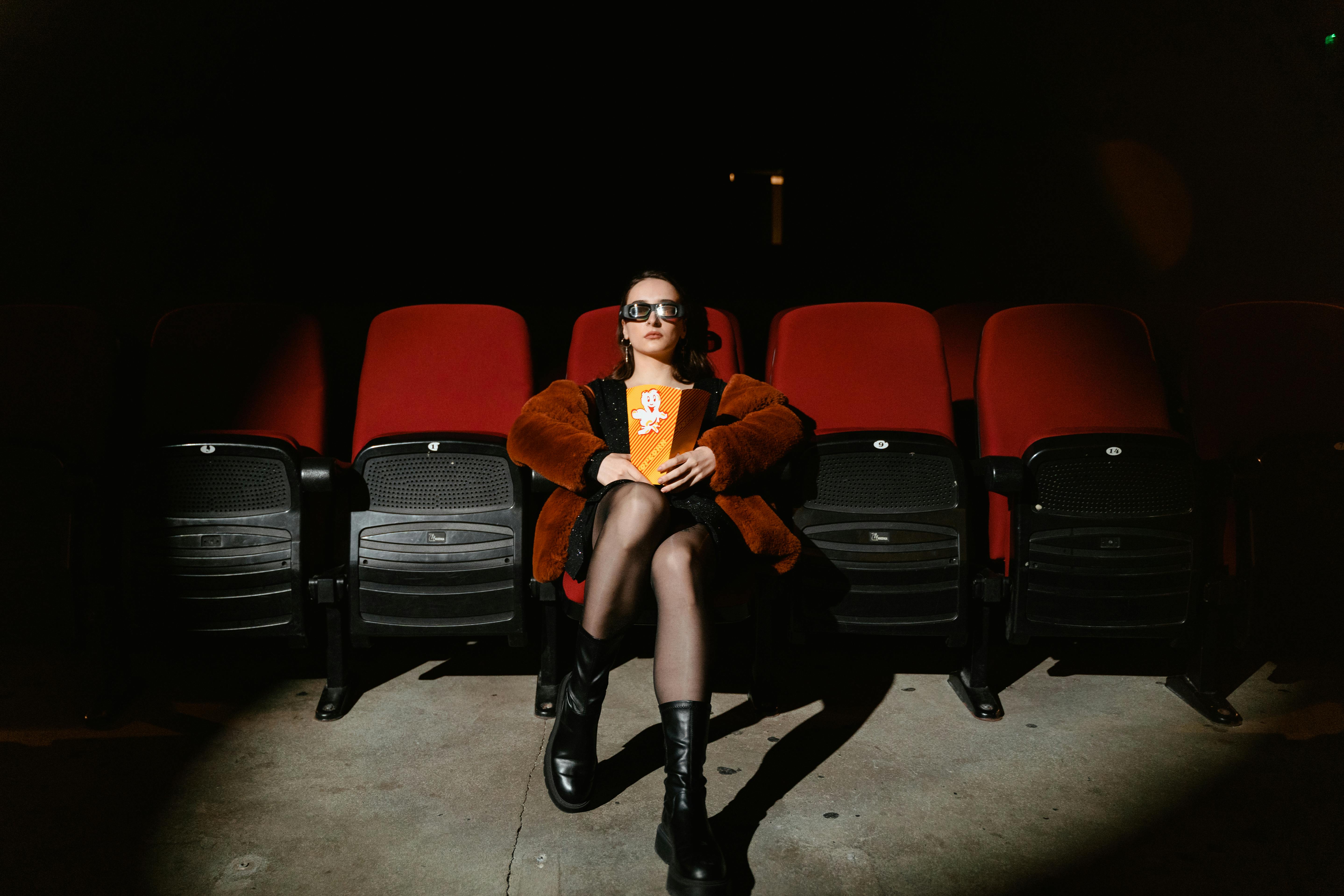
What Amenities Make Luxury Movie Theaters Stand Out?
Luxury movie theaters aim to make each visit special and memorable. One key feature is seating comfort. Places like Cinépolis offer fully reclining leather seats. These are great because they let you lie back and enjoy the film without distractions. But comfort isn't just about the seat; it's also about service. At some theaters, you can press a button and have staff come to you. This means you can get popcorn or drinks delivered right to your chair. At iPic Theaters, for example, you'll find cushioned recliners and even Premium Plus seating for that extra cozy feel.
Beyond seating, luxury theaters provide experiences that are rare in traditional cinemas. Imagine enjoying a movie with gourmet food. These theaters often include upscale dining options like lobster rolls or sliders. At Eclipse Theaters in Las Vegas, the menu is extensive. You can even order a chimichurri steak, showing that these theaters aren't just about movies, but about exceptional dining, too. Plus, they often offer a range of drinks, from mocktails to high-end wines, making the whole visit feel upscale and personalized.
How Does The Dine-in Cinema Menu Enhance the Experience?
The dine-in cinema concept transforms where you eat into something much more exciting. Imagine watching a film and being served a delicious meal at the same time. At Nitehawk Cinema in Brooklyn, for instance, you can find everything from quesadillas to cheese and charcuterie plates, served right to your seat. This means you won't miss any important scenes while fetching snacks.
Menus often reflect gourmet tastes, offering items you won't typically find at a regular theater. For example, Cinépolis boasts a selection that includes bento boxes and even classic cheeseburgers. This diversity caters to different palates, making dine-in cinemas ideal for both food lovers and movie buffs. The setting adds a layer of enjoyment that goes beyond popcorn. With meals that rival restaurants, these theaters invite you to savor each bite, integrating dining seamlessly with the movie experience.
What Sets Boutique Cinemas Apart from Traditional Ones?
Boutique cinemas are all about style and unique film experiences. They often focus on indie films or classic titles instead of mainstream blockbusters. This gives them a trendy vibe and attracts an audience looking for something different. Nitehawk Cinema is a perfect example, offering indie films with smaller, intimate theaters that make you feel more connected to the screen.
These smaller theaters often foster a close-knit feel as well. You can enjoy your movie with a few dozen others rather than hundreds, which makes the setting less chaotic and more personal. They also engage with the community, like The New Parkway Theater in Oakland does. This theater even donates a part of its earnings to local causes, creating a strong community link. So, at boutique cinemas, you're not just watching a film; you're connecting with local art and culture.
In essence, boutique cinemas are all about creating a unique movie-going experience. Their charm is in the details—the indie film selections, intimate seating, and even their decor. These theaters are about more than the movie itself; they're about enjoying cinema as an art form and part of a community experience.
Why Do Historical and Art House Cinemas Remain Relevant?

Historical and art house cinemas hold a special place in my heart. These theaters tell stories through more than just the films they show. They're homes to beautiful architecture and unique film experiences that can't be found in modern multiplexes. Even though times have changed, these cinemas continue to attract moviegoers with their unique features and charm.
How Does the Architecture of Historical Theaters Influence the Viewing Experience?
Walking into a historical theater is like stepping back in time. The grand designs and ornate details of historical theaters are more than just decoration—they transform the movie-going experience. Many historical theaters boast features like lavish lobbies, intricate ceiling designs, and grand staircases. The architecture creates a sense of occasion that enhances the entire experience. When you sit in plush, velvet seats and feel the weighty curtains part before the screen, you know you’re in for a special evening. The environment itself becomes part of the entertainment, offering a cinematic journey that begins the moment you step inside.
What Role Do Art House Cinemas Play in Promoting Indie Films?
Art house cinemas are champions of the indie film scene. These theaters are crucial for filmmakers to showcase their works because they offer a platform for artistic expression. Indie films often tell stories that major studios might overlook. Art house cinemas regularly feature smaller films, documentaries, and foreign titles. Some have even launched the careers of notable filmmakers by giving them the spotlight they needed. By offering diverse programming, these cinemas actually help in expanding audiences' film taste. If you're a fan of discovering hidden gems and seeing new perspectives, attending an indie film screening at your local art house cinema provides both entertainment and education. This commitment to diversity enriches the cultural tapestry of the community.
What Makes Indie Film Theaters a Unique Cultural Venue?
Indie film theaters are not just places to watch movies—they’re vibrant cultural hubs. These theaters often host exciting events like Q&A sessions with filmmakers, live performances, and film festivals. Many patrons also love the feeling of community they find in these intimate venues, which tends to draw passionate film enthusiasts and curious viewers alike. Often, indie film theaters are located within neighborhoods, becoming an integral part of the local culture. They provide a wonderful space for people to meet, discuss, and bond over quality cinema. Independent movie theaters also take creative risks that commercial cinemas might not, which keeps the film scene fresh and exciting. The artsy designs and charming concessions enhance this unique atmosphere, making films feel more engaging and personal.
How Have Cinema Accessibility and Technology Evolved?

Cinema has changed a lot over the years. Today, it's about more than just watching movies. New technology and features now help everyone enjoy the cinema. Let's look at how accessibility and technology make this possible.
What Accessibility Features are Available in Modern Cinemas?
It's important everyone can enjoy movies. Modern cinemas offer many features to make this happen. One great tool is the hearing loop system. It helps people who wear hearing aids. Another helpful feature is closed captioning devices. These display words, letting people read along with the movie. There's also audio description services for those who are blind or have low vision. These devices tell the viewers what’s happening on the screen. Wheelchair spaces make cinemas accessible, and many theaters have elevators or ramps so patrons can reach any part of the cinema easily. Some cinemas offer special screenings for kids with autism. The lights stay on, and sound is kept low. The important thing is that these features let everyone enjoy movies comfortably and equally.
How are Cinema Technology Advancements Enhancing Viewer Experience?
Technology and movies go hand in hand now more than ever. For a crisp picture, cinemas use 4K digital projectors. These projectors show images with very sharp details. Another exciting tool is laser projection, which offers bright colors and clear pictures. Sound in theaters is also better with surround sound systems like Dolby Atmos. This wraps the audience in sound from all directions. A bath of sound swirls around you, rather than coming just from the front. Some theaters have seats that move with the action. This makes you feel more involved in the movie. For extra comfort, some modern cinemas provide recliner seats. These seats make long movies feel shorter as you relax. These advancements create a fuller, richer movie experience.
What is an Immersive Movie Environment and How is it Achieved?
An immersive movie environment means getting closer to the movie's world. It's when you feel like you're part of the movie. This experience is crafted through new technology and cinema design. One key aspect is IMAX theaters. IMAX has larger screens and special layouts that wrap the image around your field of view. Another exciting format is 4D cinema. This includes moving seats, wind, fog, or scents to match what's happening on screen. Along with visuals and sounds, 4D can make you feel like you're in the story. LED screens also play a role in creating immersive settings. They shine with many colors and vibrant pictures that stand out. Architects sometimes design unique theaters with grand designs to enhance the experience. For example, some theaters feature starry ceiling lights to transport movie-goers to another world, or domed screens that expand the story around viewers. These immersive elements create memorable movie experiences and engage all your senses, bringing the scene to life for everyone to enjoy.
Through these advancements, cinema becomes a place where technology meets accessibility. The focus is on making movies more enjoyable for everyone. This way, the cinema becomes a welcoming place for anyone who loves a great story. Today, the magic of movie-watching is improved by exciting technology and important features that bring inclusivity and enjoyment together.
How Are Cinema Experiences Changing with Modern Trends?

How Do Cinemas Support Community Engagement?
Cinemas have become more than just theaters with rows of seats. They play a pivotal role in bringing people together. I've seen how initiatives like special screenings and themed events make a big impact. For example, some cinemas host classic film nights or family-friendly days with activities. These events create a shared space for everyone, adding a new layer of community spirit.
Community-driven actions might include partnering with local artists. This turns cinemas into venues for art showcases or music events. The New Parkway Theater in Oakland, for instance, donates 20% of Wednesday ticket sales to local non-profits. Such efforts make a difference, showing that cinemas value their neighborhoods and want to give back. It's amazing how these places adapt, enriching the social fabric of the community.
What is the Impact of Streaming Services on Traditional Cinemas?
The rise of streaming has definitely changed how we watch movies. With platforms like Netflix and Disney+, movies are more accessible. But what does this mean for traditional cinemas? There is a shift that I can't ignore. Fewer people might be visiting cinemas for older releases that are now readily available online.
However, cinemas aren't just sitting back. They're evolving and finding ways to offer something special. Let's talk about exclusive releases, for instance. Filmmakers and studios sometimes partner with cinemas to show movies first before they're online. This gives viewers a reason to visit the theater, with big screens and immersive sound that home setups can't match. Plus, social experiences of movie-going are irreplaceable. Watching a film in a room full of others reacting makes it more exciting.
The challenge now for cinemas is to innovate continually. Whether it's enhancing comfort or creating unique events, they need to keep inviting people in. It's a balancing act: maintaining tradition while embracing digital shifts.
How Do Modern Cinema Marketing Strategies Attract Audiences?
Cinemas today use savvy tactics to draw in viewers. It's impressive how creative marketing strategies have become vital for cinema survival. Think about personalized experiences. Many cinemas use digital platforms to create tailored ads, ensuring the right movies reach the right audiences. I've noticed emails or promotions that feel curated, sparking interest more effectively.
Another fascinating trend is how cinemas capitalize on social media. By sharing behind-the-scenes content or creating interactive polls, they're engaging audiences directly. It's all about building excitement and anticipation. Social media contests offering free tickets or exclusive events also work wonders in pulling crowds.
Furthermore, loyalty programs have made a strong comeback. Cinemas reward frequent visitors with discounts or exclusive screenings. This not only nurtures customer loyalty but also makes movie-going feel special and personalized. It's intriguing how these strategies mix both tech-savvy approaches and genuine audience engagement.
Cinemas are also redefining movie-going with dine-in options. Take a look at luxury chains like iPic Theaters: they offer gourmet dining experiences, elevating the screening. With options ranging from sliders to lobster rolls, such strategies differentiate them from traditional movie-watching. It's not just about seeing a film anymore, but enjoying a comprehensive entertainment package.
By blending technology, community roles, and strategic marketing, cinemas continue to draw audiences. They tackle streaming challenges while enhancing engagement, offering experiences beyond what's possible online. This evolution keeps them relevant, providing a matchless way to enjoy movies.
Conclusion
We've explored cinema formats like IMAX and 4D for thrilling experiences. Each offers something unique, from luxury theaters with fine dining to historic cinemas with charm. Drive-ins bring nostalgia, while outdoor screenings reinvent movie nights. Technology continues to evolve, making films more accessible and immersive. As streaming changes viewing habits, cinemas adapt, engaging communities and offering more than just films. Enjoy cinema's magic; there's something out there for everyone.

